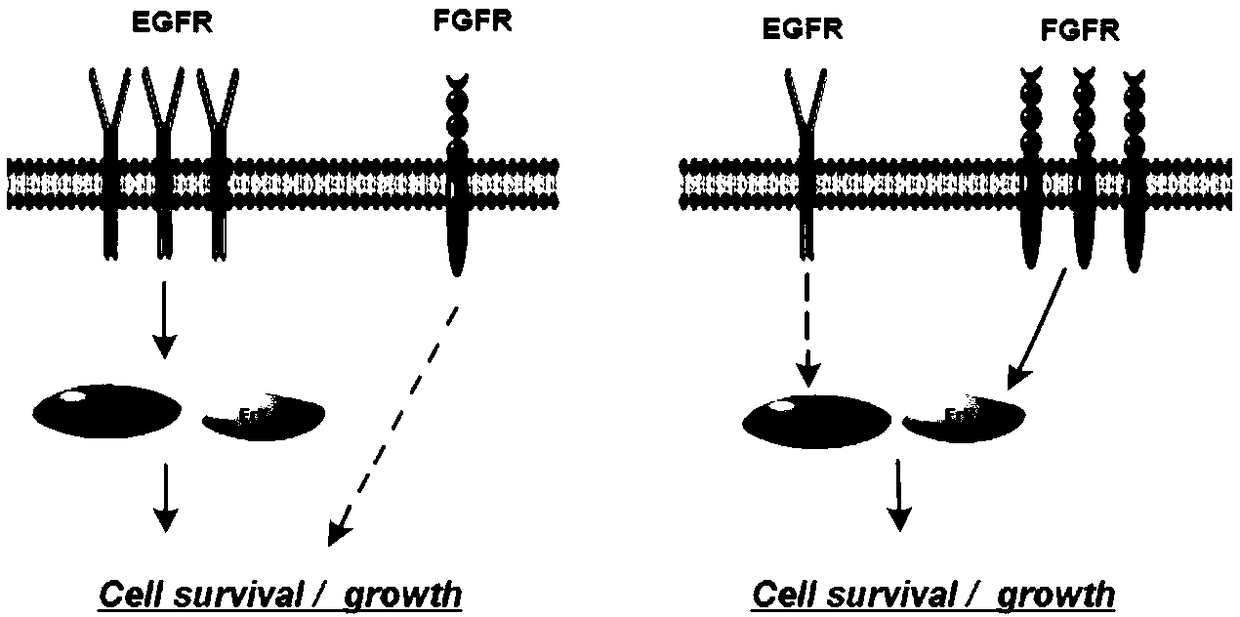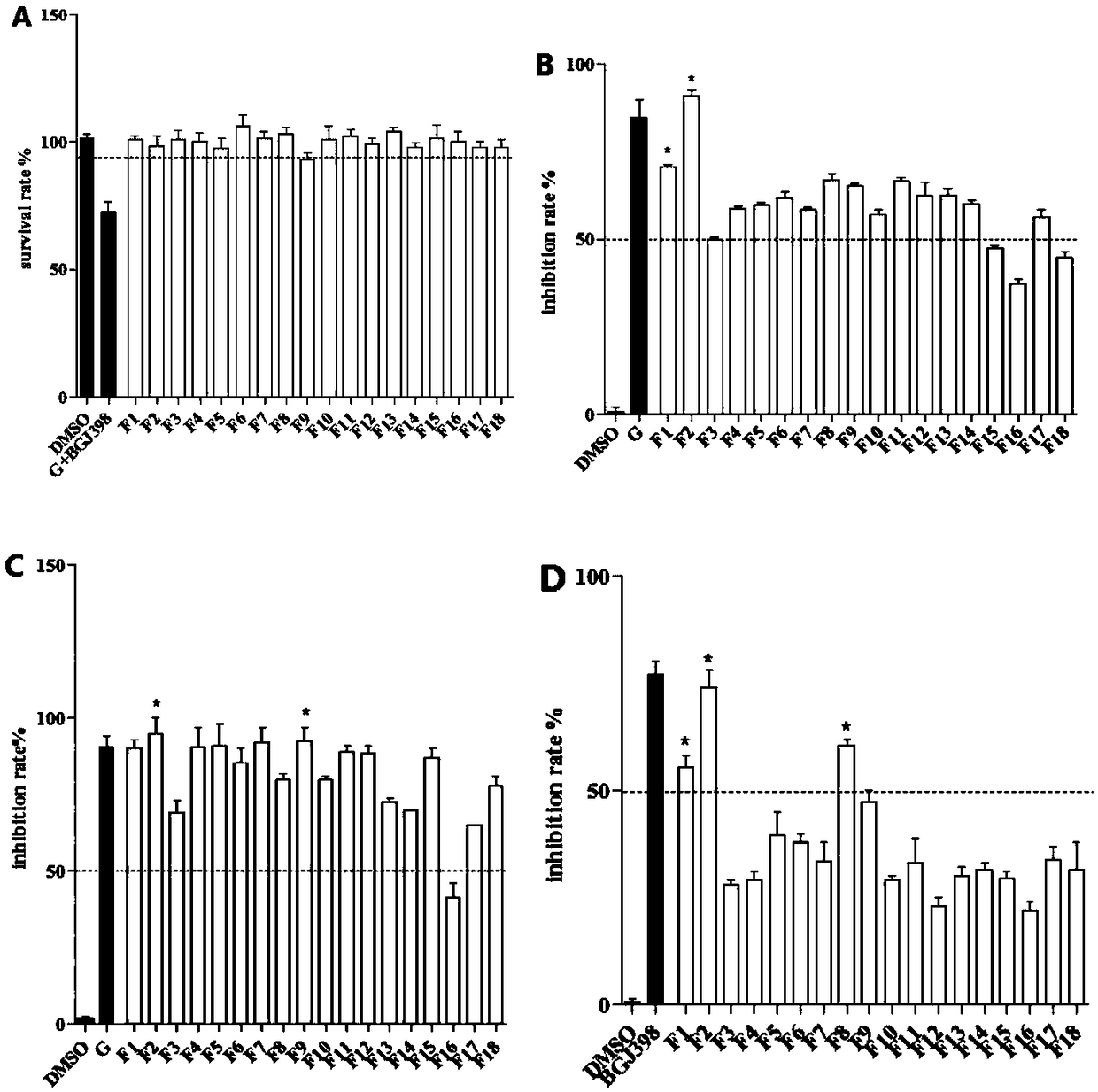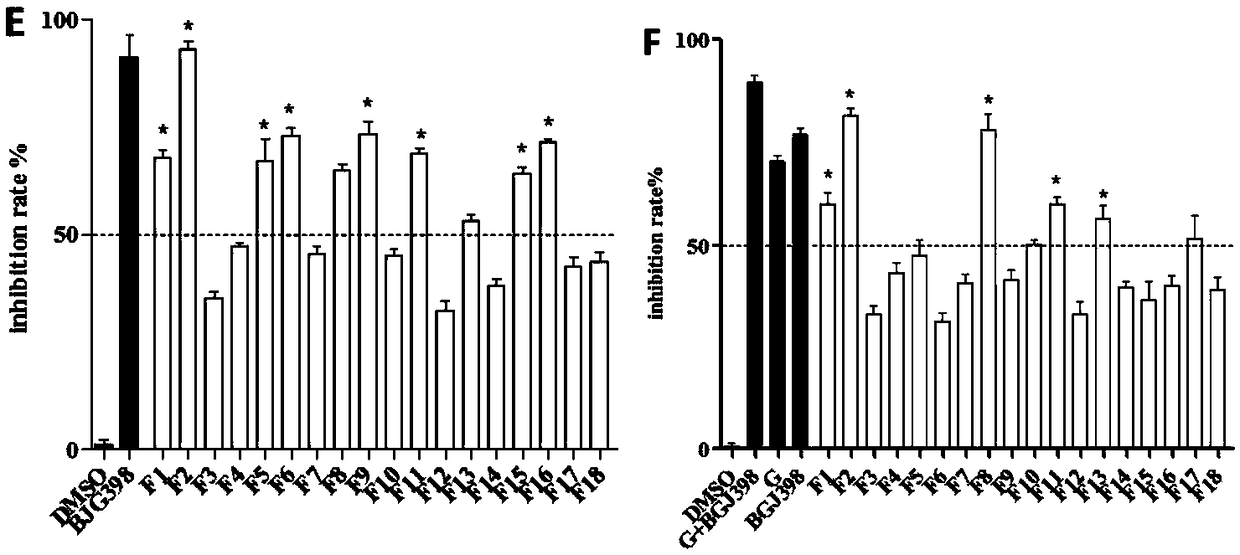1-(2,6-dichlorophenyl)-3-(substituted pyrimidine-4-yl)urea compound and preparation and application thereof
A compound, chlorophenyl technology, applied in the field of medicinal chemistry, can solve problems such as drug interactions, toxic side effects, and inconvenience for patients with medication
- Summary
- Abstract
- Description
- Claims
- Application Information
AI Technical Summary
Problems solved by technology
Method used
Image
Examples
Embodiment 1
[0033] The synthesis of embodiment 1 compound
[0034] 1.1 The specific synthetic route of the compound is as follows:
[0035]
[0036] 1.2 Synthesis steps
[0037] a. the synthesis of the first step intermediate product:
[0038] Step 1: Take a dry three-neck reaction bottle and put it into a magnet. Add 4-amino-6-chloropyrimidine (1eq), KI (0.5eq), and dissolve with absolute ethanol (35mL). After heating with stirring for 10 min on a magnetic stirrer, trifluoroacetic acid (200 mL) was added. activation. After about 1 h, substituted aniline (0.8 eq) dissolved in absolute ethanol (15 mL) was added for reaction. Note that it should be added in a dropwise manner to achieve the effect of long-term excess reaction, and the dropping time should be controlled at about 1 hour.
[0039] Step 2: use TLC method to detect the reaction progress and reaction effect. Generally, after 36 hours of reaction, the reaction is almost complete. After the reaction is complete, first spin ...
Embodiment 2
[0066] Example 2 compound anti-tumor cell activity
[0067] 2.1 MTT method to test the antitumor activity of compounds
[0068] This experiment uses the MTT method. The selected normal lung cells were BEAS-2B cells; the selected five non-small cell lung cancer cells included lung adenocarcinoma cell A549 (WT EGFR), lung adenocarcinoma cell PC-9 (EGFR d746-750), lung squamous cell carcinoma Cancer cell H520 (FGFR amplification), large cell lung cancer H1581 (FGFR amplification) and lung squamous cell carcinoma H226 (FGFR amplification / overexpressed EGFR). The above-mentioned cells with logarithmic growth were selected, digested, collected, and counted with a cell counting plate. Next, dilute the counted cells to an appropriate concentration (5*10^4 cells / mL~8*10^4 cells / mL), and add the diluted cell suspension to the 96-well plate at 100 μL per well and remember to set blank control wells containing only medium on the same well plate; after plating overnight, replace with fr...
example 3
[0071] IC of example 3 compounds F1, F2 and F8 to five kinds of tumor cells 50 experiment
[0072] 3.1 MTT method to test the IC of the compound 50 value
[0073] According to the results of the toxic effects of all target compounds on normal lung cells and the results of their inhibitory effects on five NSCLC cell lines, we obtained compounds F1, F2 and F8 that all have inhibitory effects on five NSCLC cell lines. We choose these three compounds, further to do IC 50 experiment. Six concentrations (20 μM, 10 μM, 1.0 μM, 0.50 μM, 0.10 μM and 0.01 μM) were first set for both compounds. Then, five non-small cell lung cancer cell lines, including A549 cells, PC-9 cells, H520 cells, H1581 cells and H226 cells, were treated with different concentrations of these two compounds. Obtain the optical density (OD) value, calculate the inhibition rate, and calculate the IC of different compounds by GraphPadPrism 5 software 50 value.
[0074] 3.2 Experimental results
[0075] IC for...
PUM
 Login to View More
Login to View More Abstract
Description
Claims
Application Information
 Login to View More
Login to View More - R&D
- Intellectual Property
- Life Sciences
- Materials
- Tech Scout
- Unparalleled Data Quality
- Higher Quality Content
- 60% Fewer Hallucinations
Browse by: Latest US Patents, China's latest patents, Technical Efficacy Thesaurus, Application Domain, Technology Topic, Popular Technical Reports.
© 2025 PatSnap. All rights reserved.Legal|Privacy policy|Modern Slavery Act Transparency Statement|Sitemap|About US| Contact US: help@patsnap.com



